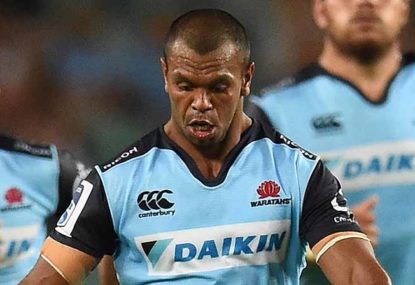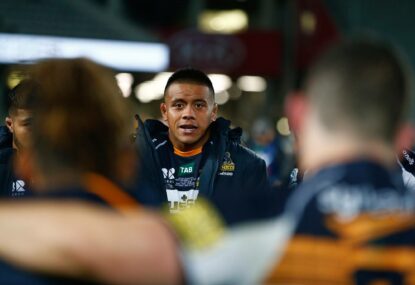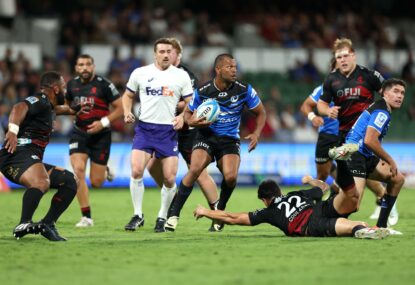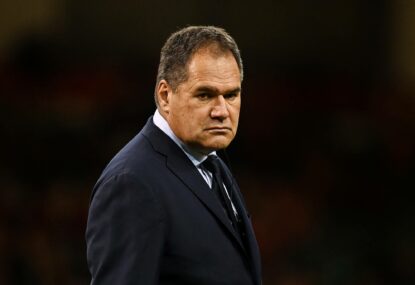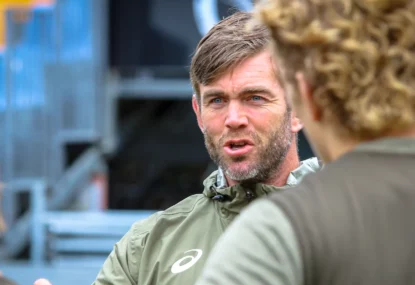Many people will be wanting to know just how serious could the injury to Kurtley Beale really be?
Well if his injury is a ruptured patellar tendon, then the answer is “very.”
So serious in fact, that it could have a long-term effect on his career.
The patellar tendon’s function is to transfer the force of the quadriceps muscles as the knee straightens. Without it, even walking is not possible because you cannot straighten the leg.
This injury is usually caused by the strain of jumping and landing, hence it is called “jumper’s knee.”
If a player lands in such a way that, when the quadriceps contracts, the knee is being forcefully straightened (as may have happened to Beale), then the tendon is put under enormous stress and can rupture or tear.
It can also become inflamed as a result of repeated stress that, depending on the severity, may or may not cause any immediate problems. But it is in a precarious state.
When inflammation occurs, tendons can repair themselves by building collagen fibers, unless the repeated activity does not allow the lesions to repair.
Over-training without enough rest on the body is one way this can actually happen
This is why professional athletes can be particularly vulnerable to this injury becoming worse. Though no exercise at all is not good, over-exercising is also precarious.
According to Physio Works, there are four stages of injury to the patellar tendon, with a tear or rupture being the most severe.
If Beale’s injury is the indeed a rupture as has been reported, then he could be out for 4-6 months or even longer depending on his recovery.
While in most cases there is a full recovery, there are cases where only 85-95% of the injured person’s strength is recovered.
Ongoing tendinitis can be career-threatening and painful.
It can also change the running biomechanics and cause back problems as happened to athletes such as Green Bay Packers wide receiver Robert Brooks in the 1990s, who was forced into an early retirement by the injury.
This changes a lot of things for Beale, Michael Cheika and, of course, the Wasps.
One thing that must not happen, but something which so often does in professional sport, is rushing Beale back when he is only 90-95% fit.
The nature of privately-owned English professional rugby worries me here. That being said, Australia’s record in this area across all professional sport is not crash-hot either.
I hope, as I’m sure we all do, that Beale makes a complete recovery. But it will be slow going.
So the debate now shifts.
Who now plays at 12 for the Wallabies.
Matt Toomua and Samu Kerevi are also recovering from injuries. Even if they do recover in time for the England Test series, can Cheika play them with the risk they’re not fully match fit?
Will Cheika play it safe with old blood like Christian Lealiifano or risk trying something new that could expose the Wallabies defensively?
One thing is for certain, and that is that Israel Folau will be at fullback, not outside centre. With so many injuries to key players, Cheika can’t risk reshuffling the Test backline as well.
This could open the door for someone like Karmicheal Hunt, but has he really be playing well enough for test contention?
Or perhaps a young gun gets an opportunity.
Regardless of what happens, there are plenty of questions floating around now.
Was it actually a certainty Beale would play as the run-on 12 anyway?
What will the Wasps do now they know the extent and nature of this injury?
Will they re-do his contract or scrap it for at least a season until they know he is fully fit?
That would be the smart thing to do with this injury, but is it already locked in?
Toomua, Kerevi and now Beale are all out. Not having lots of teams in the Super Rugby finals may actually be a blessing in disguise for Cheika.





























































































